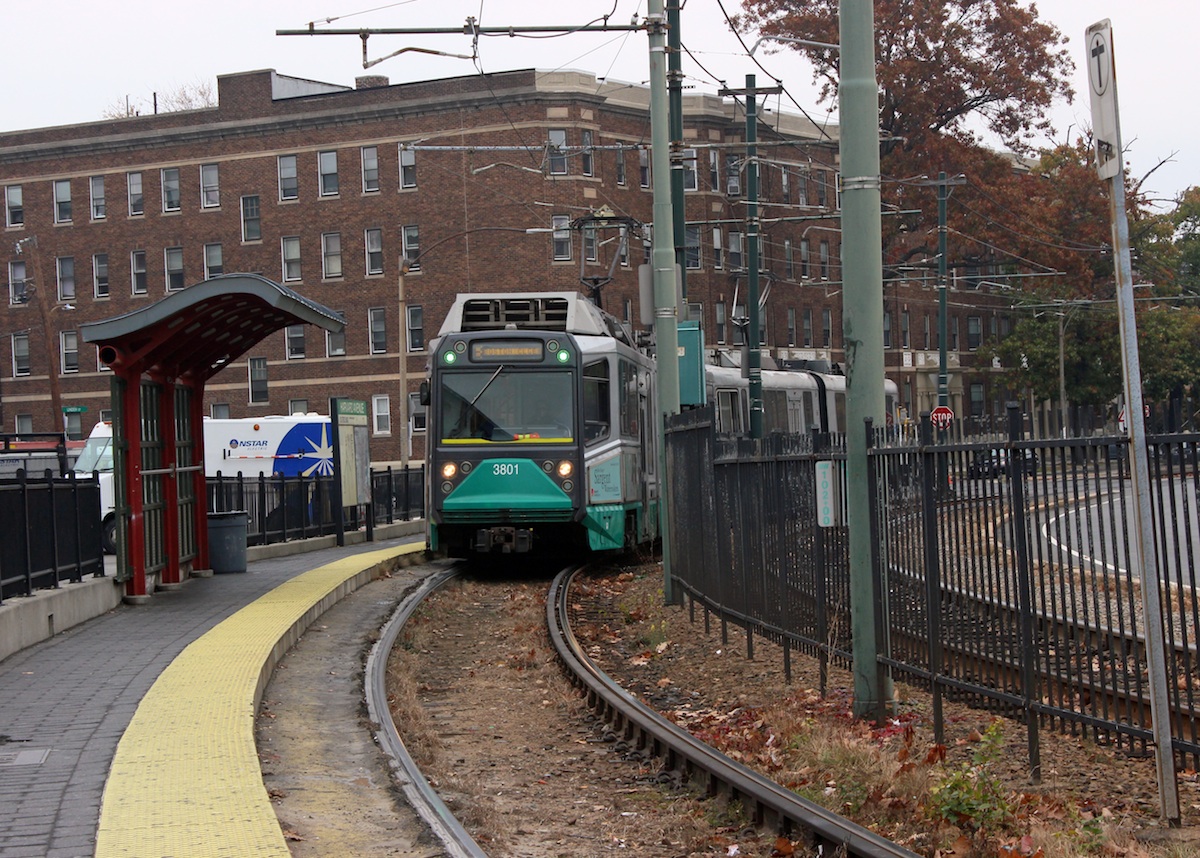Here Are Some Public Transportation Projects That Are Cheaper Than the Green Line Extension

photo By Olga Khvan
Boston is an expensive place to live, work, and play but is also an expensive place to build public transportation? The Big Dig and Green Line Extension suggest that yes, it is expensive to build here but does it have to be?
Transportation blogger Ari Ofsevit, known as The Amateur Planner, compiled a handful of American public transportation projects that are cheaper, larger, and in some cases more complex than the Green Line Extension.
Minneapolis-Saint Paul Green Line
Distance: 11 miles
Cost: $957 million
Cost per mile: $87 million
Completion date: 2014
Engineering difficulties: rebuilding bridge over Mississippi River for light rail, rebuilding the entirety of University Ave lot line-to-lot line, junction and flyover with existing Blue Line in Minneapolis. Likely cheaper than the Green Line extension. But not 9 times cheaper.Los Angeles Expo Line Phase II
Distance: 6.6 miles
Cost: $1.5 billion
Cost per mile: $227 million
Completion date: 2016
Engineering difficulties: Several grade separations, parallel bike/walk facility. Still four times cheaper than the GLX.San Francisco Central Subway
Distance: 1.7 miles
Cost: $1.6 billion
Cost per mile: $941 million
Completion date: 2019
Engineering difficulties: full deep bore tunnel in a seismically active area with three underground stations. In a rather expensive city to work in. And barely more than the GLX, which is being constructed in a grade-separated right of way!Seattle University Link
Distance: 3.1 miles
Cost: $1.9 billion
Cost per mile: $613 million
Completion date: 2016
Engineering difficulties: full deep bore tunnel below the water table in a seismically active area with two underground stations. And quite a bit cheaper per mile than GLX.
Ofsevit scratches his head as to why Boston’s public transportation projects are not in the same cost atmosphere as the rest of the country. Here are four additional impressive public transportation projects that cost less than the Green Line Extension that Ofsevit did not include in his post:
Charlotte Blue Line Extension
Distance: 9.3 miles
Cost: $1.2 billion
Cost per mile: $129 million
Completion date: 2017
Engineering difficulties: They’re building it from scratch, relocating utilities, and elevating the track in the some areas.
Virginia Beach Tide Line
Distance: 7.4 miles
Cost: $318 million
Cost per mile: $43 million
Completion date: 2011
Engineering difficulties: It went $100 million over budget unlike the GLX which is a billion over budget and three miles shorter.
Honolulu Rail Transit Project
Distance: 20 miles
Cost: $5.2 billion
Cost per mile: $260 million
Completion date: 2019
Engineering difficulties: Dude, it’s Hawaii. It’s elevated, it’s on an island, there are volcanoes, Godzilla attacks, tourists, Scott Caan. It’s a giant headache.
Phoenix Valley Metro Light Rail
Distance: 20 miles
Cost: $1.4 billion
Cost per mile: $70 million
Completion date: 2008
Engineering difficulties: The rails cracked due to the use of improper welding torches.
For perspective, the 4.3 mile Green Line Extension is currently estimated to cost $3 billion, that’s $700 million per mile. How is that even possible? Look, there’s no debate about whether or not we actually need to build the Green Line Extension to move forward in the 21st century (we do) but why are its costs so out of whack with what goes on elsewhere in the United States? It’s not a complicated project: the MBTA is extending a light rail system along an existing right of way they already own and building seven stations.
Right now, nobody seems to know exactly how or why the Green Line Extension’s costs have skyrocketed in such a short time but the board overseeing the MBTA announced on Monday that they plan to hire an outside consultant to figure it out.
The Green Line Extension isn’t the Big Dig in complexity nor should it be in cost.

